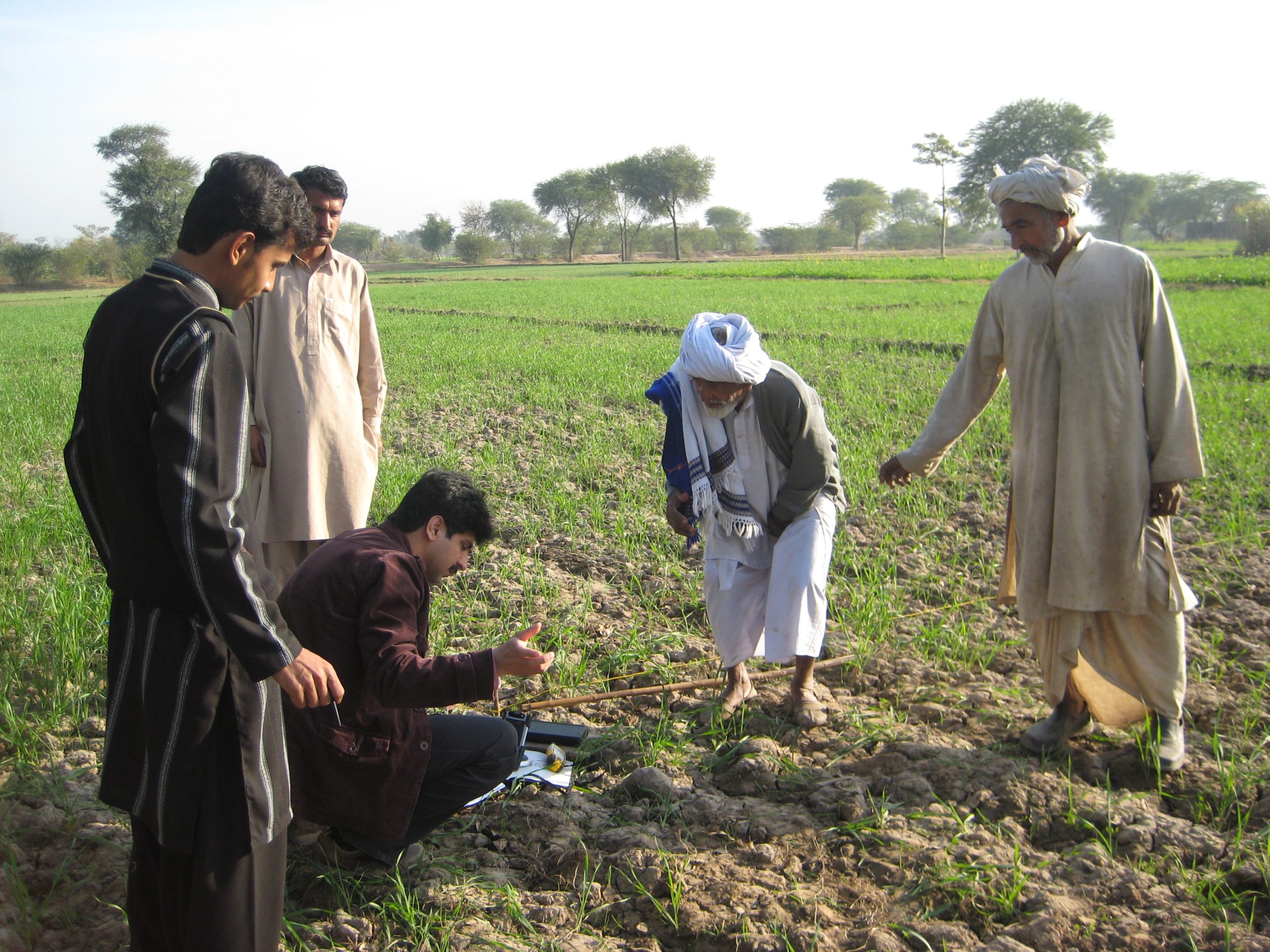Dr. Naveed Alam has developed a sustainable irrigation concept for Punjab (Pakistan). It could liberate farmers from the salinity that menaces their fields.
Before the British came in 1850, the Punjab in the east of Pakistan was a desert area with five rivers running through it. The British then set up an irrigation system and turned the region into production land for wheat, cotton and rice. Irrigation channels spread the river water over the doabs (land in between rivers) and groundwater water was used if surface water fell short. The wonders from the west had turned desert into farmland.
This type of groundwater use, as complementary to river water, is known as ‘conjunctive use’.
The trouble began in the 1950’s says Dr. Naveed Alam, a civil engineer from Pakistan. By then, saturation of the soil with water and irrigation-induced-salinity had reached levels that made millions of hectares unsuitable for agriculture.
In the period 1960 – 1980 the Pakistan government tried to regain control over the situation with help of US hydrologists. Their solution was to extract the deep salty ground water and pump it into the drainage system. Over time however, the effect was the inverse of what they had hoped to achieve: they had brought up the salt water from the deep into the shallow zones thereby threatening the intake of the so-called skimming wells. These are shallow wells that pump up the sweet water from a thin layer supported by salt groundwater underneath.
In the next episode, numerous articles were published that explained how skimming wells could be operated sustainably. But in practice, Alam in his function of consultant engineer saw how farmers reported salinization of their fields.
During his PhD research in Delft under supervision of groundwater expert Professor Theo Olsthoorn, Alam made analytical and numerical models of groundwater flows and he now asserts with confidence that there is no way that you can operate skimming wells sustainably. In the end, sometimes after hundred years or more, the salt water from the deep underground is drawn towards the surface and will make the irrigation water brackish.
However, there is a solution: the ‘balanced scavenger well system’ consisting of a production well and a so-called scavenging well some 20-30 meters deeper. The dual pump system taps both the shallow fresh water and the deeper saline water zones respectively. These wells pump fresh and saline waters from the same site simultaneously without mixing, through two separate discharge systems. The brackish water is discharged into the river, while the sweet water is used for the crops.
An animation of this ‘balanced scavenging well’ shows how the light-colored salty water is effectively screened from the sweet water above it. If balanced right, the salt concentration in both the upper and lower well will go down and stabilize over hundreds of years. Note: the system only works in ‘conjunctive’ use of groundwater, that is: as a supplement to surface water. If there’s no river, no sustainable groundwater removal exits.
Alam says he only needs figures for surface water supply, the leakage of the channels, the return flow and the salinity in surface irrigation water to calculate the amount of sweet and brackish water to be retrieved. This can be calculated on the scale of a single plot or a farm.
Asked if he has tested his balanced scavenging well in practice, Alam smiles and hands me a list of propositions taken from his PhD thesis. Number 6 reads: ‘Managing groundwater salinity in the Punjab is not as big a problem as is generally presumed, but internal politics, external policies and grants make it almost impossible to achieve.’
Naveed Alam, Sustainable conjunctive use of groundwater for additional irrigation, PhD supervisor Prof. Theo Olsthoorn (CEGS), 10 June 2014 15:00



Comments are closed.